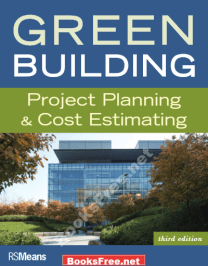



If anything above the median value of ₱10,000 per m2 is considered expensive, then twenty provinces in the country fall under this category. Seventeen provinces in the Philippines, Siquijor, Kalinga, La Union, Sultan Kudarat, Ilocos Norte, Zamboanga Del Sur, Cotabato City, Zambales, Sorsogon, Camarines Sur, Negros Occidental, Catanduanes, Nueva Ecija, Eastern Samar, Quirino, Nueva Vizcaya, Western Samar and Pangasinan have a building cost per square metre of ₱10,000. The province of Guimaras, Misamis Occidental, Occidental Mindoro, Bulacan, Romblon, Apayao, Ifugao, Marindique, Agusan Del Sur, Third District and Bohol come in at an average price of ₱8,000 per m2 for a newly built residence.įifteen provinces, Davao Occidental, Misamis Oriental, Cavite, Northern Samar, Davao Oriental, Abra, South Cotabato, Cagayan, Zamboanga Sibugay, Lanao Del Sur, Oriental Mindoro, Southern Leyte, Ilocos Sur, Batangas, Tarlac and Biliran have a residential building cost rate of ₱9,000 per m2.

Nine provinces of the Philippines, namely Negros Oriental, Davao Del Norte, Dinagat Islands, Surigao Del Norte, Isabela City, Bukidnon, Aurora, Agusan Del Norte and Leyte are priced at ₱7,000 per m2 for new home construction. These are followed by Sarangani and Maguindanao (excluding Cotabato City) at ₱6,000 per m2.īar Chart – Residential Building Costs Per Square Metre Philippines 81 Provinces and Regions The cheapest places to build a residence are Lanao Del Norte, Compostela Valley, Camigiun, Zamboanga Del Norte and North Cotabato at ₱5,000 per m2. The table below shows the average building cost per square metre for residential buildings in each of the 81 provinces in the Philippines. Provincial/Regional Average Costs for New Residences Building costs are more likely to decrease further as consumers lose their income and purchasing power due to lockdown regulations put in place by governments to prevent the spread of coronavirus. The Covid-19 pandemic will certainly have an impact on local as well as global building trends. The year 2020 witnessed the outbreak of the global Covid-19 coronavirus pandemic which had a negative effect on many countries, disrupting the economy, normal business and life as we know it. The only type of residence which maintained an increase from year to year are single family homes, which registered a 5% cost increase in 2019. Line Graph_Residential Building Costs Per Square Metre in The Philippines 2019_2018 Also, since an apartment is a huge block of compact individual family units, the final project cost will be exceedingly higher than a single family home, duplex or quadruplex. However, note that an apartment will accommodate more tenants or occupants per square metre than a single family home, duplex or quadruplex. Otherwise, the superficial area rate for building an apartment is always lower than building a single family home, duplex or quadruplex. Other residences which don’t fall in the above named categories saw a decrease in building costs (₱9210 to ₱7583) for the successive years 20, respectively.Ī look at the bar graph below shows that there is a small variance in cost between single family homes, duplex houses, quadruplex houses and apartments if ₱300 to ₱1300 per square metre is an extra amount you are willing to build a new house for. There was also a decrease in costs for two other types of residences, namely apartments (₱8743 to ₱8577) and condominiums (₱18,776 to ₱15,094). The square metre cost of building a quadruplex or duplex house decreased from ₱10,126 in 2018 to ₱9,553 in 2019. The national average cost of building a single family home was ₱9,949 per square metre in 2019 and ₱9,475 per square metre in 2018, which was a 5% increase from the previous year. PSA Residential Building Costs – Philippines National Average Costs for New ResidencesĪ significant decline in costs was observed in all residential construction with the exception of single family homes. The residential building costs include different types of residences such as single family homes, duplex/quadruplex houses, apartments and condominiums. In this post, we shall analyze the residential and non-residential costs (industrial, commercial, institutional, agricultural) of building across the provinces and regions in the Philippines. The Philippines government statistics authority (PSA) publishes construction cost statistics of all 81 provinces in the country on an annual, quarterly and monthly basis. The Philippines has 81 administrative/political provinces which are divided into 17 cultural/geographical regions.


 0 kommentar(er)
0 kommentar(er)
